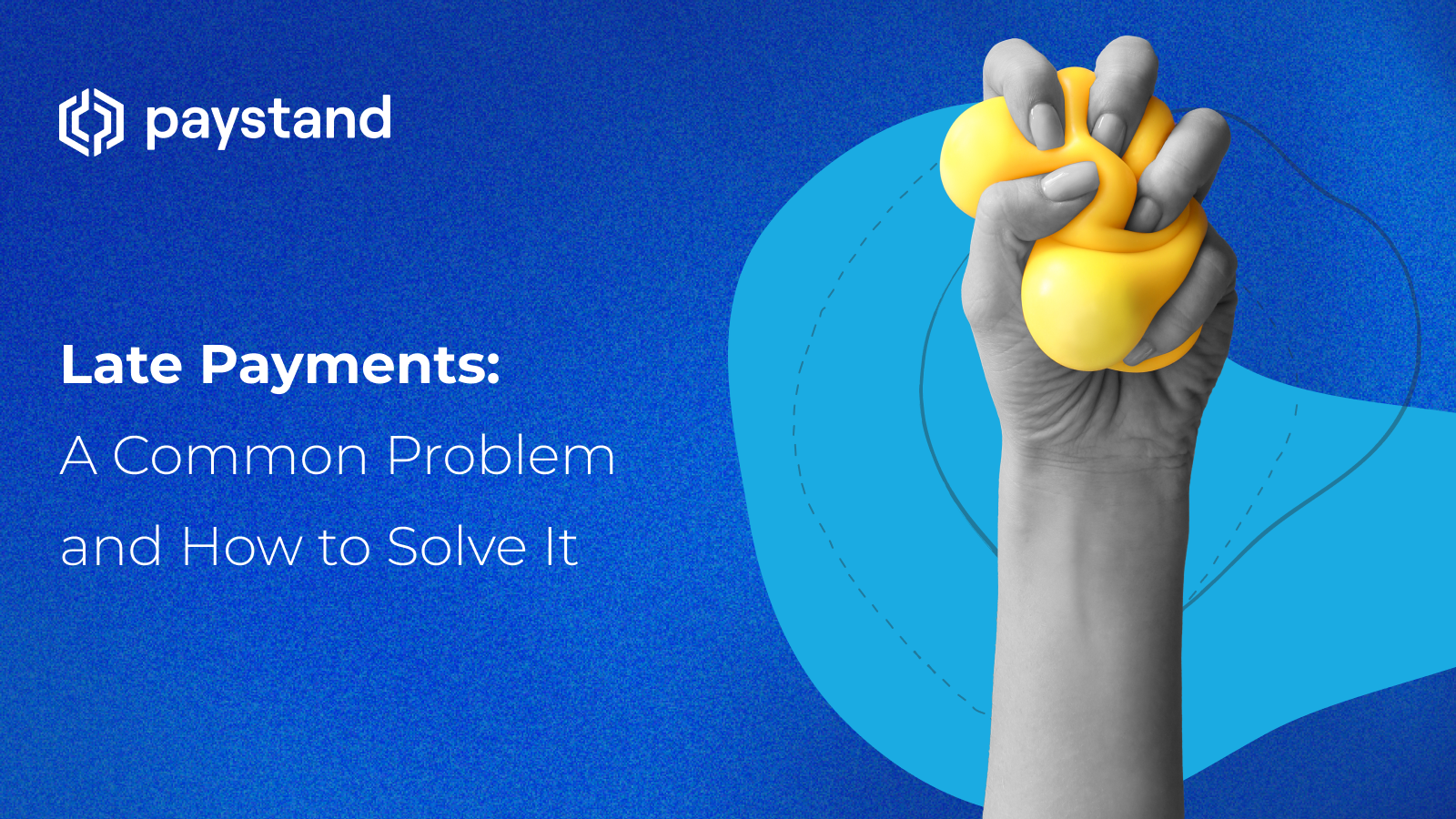Late Payments: A Frequent Problem and How to Solve It

Maintaining a steady cash flow is essential to running a business, but keeping a steady revenue stream is more challenging. According to a PYMNTS report, 93% of companies experience late payments. Payment delays pressure the accounts receivable (AR) and accounts payable (AP) teams. Delayed payment can mean straining vendor relationships, missing out on an early payment discount, and weak cash flow.
In other words, when a company receives late payments consistently, day-to-day operations and overall progress slow down. But you can avoid a potential overdue payment and bad debt in the first place. Healthy cash flow boils down to streamlining your process, starting with your customers.
By understanding why your customers are paying late (without hearing the most common excuses for late payments), you can take steps to create an actionable plan to reduce late payments and thrive as a business.
What Are Late Payments?
Late payments are a common problem in business, and they can significantly impact a company's cash flow and profitability. When a customer fails to make a payment on time, it can cause several problems for the business, including:
- Cash flow problems. Late payments can lead to cash flow problems, as the business does not have the money to pay its bills. This can make it difficult for the business to operate and even lead to bankruptcy.
- Increased costs. Late payments can also increase business costs. For example, the business may have to pay late fees to its creditors or hire a collection agency to collect the debt.
- Damaged relationships. Late payments can damage relationships with customers. If a customer is consistently late with payments, the business may be less likely to do business with them in the future.
- Legal problems. Late payments can even lead to legal issues. For example, the business may file a lawsuit against the customer to collect the debt.
How to Reduce Late Payments?
Addressing late payments requires a strategic approach encompassing communication, streamlined processes, and proactive measures. Let’s explore strategies to reduce late payments and actionable steps to mitigate this common yet crucial problem.
Digitize invoices
Let's face it: It's unlikely that a customer will send a timely payment with traditional paper invoices. Sluggish, unpredictable mail deliveries and lengthy payment processes all contribute to overdue payments. And that's before we add incorrect invoice details, missing information, or time spent sending payment reminders.
Then, consider interactive, digital invoicing. Your customer receives an invoice in their email. They are directed to a portal, where they choose their payment option and submit their payment. There is no printing, envelopes, mail carriers, or lost papers.
Switching to electronic invoicing can also cut costs. In fact, digital invoicing can cut costs by up to 70%. Moving payments to the digital world also creates a better experience for you and your customers, helping you get paid faster with just one click.
Offer incentives for paying earlier
Early payment discounts are a great way to avoid late payments. In addition, they allow your customers to save money and build business credit. You get paid sooner and can access the cash needed to handle your day-to-day business expenses.
You can also supplement this approach with late payment charges. Tacking on an additional late fee for missed payment or outstanding invoice encourages payers to at least pay on time, if not earlier.
Automated Payment Reminders
Automated payment reminders leverage technology to send timely notifications to clients regarding upcoming or overdue payments. These reminders can be scheduled to coincide with payment due dates or customized based on individual client preferences. By automating the reminder process, businesses ensure consistent communication without manual intervention.
Automated payment reminders gently prompt clients to fulfill their payment obligations on time. Businesses can send reminders via email, text messages, or dedicated notification systems to maintain regular contact with clients and minimize the risk of late payments due to oversight or forgetfulness. Additionally, automated reminders can be personalized to include relevant invoice details and payment instructions, making it easier for clients to take action promptly.
Communication Strategies with Clients
Effective communication strategies with clients are essential for addressing late payments professionally and respectfully. Open and transparent communication channels should be established from the outset, allowing clients to express any concerns or challenges they may face regarding payment. By maintaining regular contact and providing clear instructions on payment procedures, misunderstandings can be minimized, and solutions can be reached collaboratively.
Negotiate Payment Terms
Negotiating payment terms can be necessary in situations where clients are experiencing financial difficulties or unforeseen circumstances. Flexible payment options such as installment plans or adjusted deadlines help alleviate immediate financial strain while ensuring that both parties remain committed to fulfilling their obligations over time.
Handle Disputes and Late Fees
Handling disputes and late fees requires a fair and consistent approach that balances assertiveness with understanding. Clearly defined policies regarding late payments and procedures for resolving disputes or discrepancies should be communicated upfront to clients. When disputes arise, prompt and professional resolution through mediation or negotiation can help preserve the client relationship while still upholding payment agreements. Enforcing late fees when appropriate serves as a deterrent against future late payments, reinforcing the importance of timely payment compliance.
Reduce Late Payments and Invest in the Payments Process
The payment process depends on two parties: you and your customer. By strengthening your relationships, offering streamlined services, and understanding your customers and current AR system, you can lower the number of late payments you receive from your customers.
If you want to learn more about the psychological factors that shape payer behavior, take a look at our latest eBook to optimize your cash flow business and maintain a healthy relationship with your customers.






